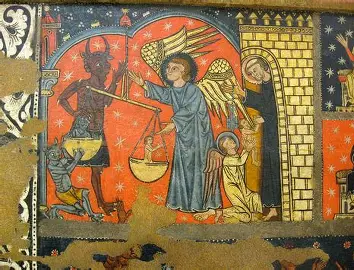Catholics take a new look at History!
This stone pipe is a puzzle! The tiny hole in the base of this stone pipe is less than 1/8th of an inch in diameter and more than two inches long. How could it have been drilled with Stone Age tools?
The pipe was found in the ruins of a 100 acre walled city built by The Hopewell Culture. They began taking over an area in Western Ohio around 500 BC, while Rome was expanding its Empire around The Mediterranean Sea.
The “Hopewell Empire” grew between Illinois and Western Pennsylvania.
A few thousand similar Hopewell pipes and relics have been found with the same, tiny holes drilled in them. How did Stone-Age manufacturers in the Hopewell’s “Empire-Building Tribe” drill tiny holes in solid stone?
~
The answer may lie in the Upper Peninsula of Michigan in The United States. Huge deposits of copper were close to the surface of the earth.
The remains of 5,000 to 10,000 pits, many bigger than a bathroom, are still there! Tens of thousands of tons of nearly pure copper were taken out of the ground.
Those countless tons of copper did not stay in North America. Less than a few thousand pounds of copper Indian relics have been found in the entire North American Continent.
Nations in Europe were desperate to get more copper as they entered The Bronze Age. Bronze weapons and armor were used by Athenians to defeat Persians at the Battle of Marathon in 490 BC. They are 90% copper! European and Middle Eastern nations would be destroyed if they could not get copper!
Mycenean traders had the biggest ships of the day. Their fleets could have traveled to Michigan every year. Copper mined in Michigan could have been sent down the St. Lawrence River to Mycenean ships that took it to Europe.
Or, those hundreds of shiploads of copper could have been taken to The Mississippi River and down to The Gulf of Mexico. One way or another, that copper went somewhere! Where else but to weapon and armor manufacturers of Bronze Age Europe?
~
Mycenean Greeks won The Trojan War around 1250 BC. It may have been Myceneans who established early Hilltop Forts, like La Bastida. It was built in Southeastern Spain around 2,400 BC. It has the oldest stone arch in Western Europe! Did Mycenean invaders spread out to become what are known today as Celtic Peoples, Tribes, Nations, and Empires?
This is a Mycenean carving on a small, hard stone less than 1.5 inches long. It is from 1,500 BC! Myceneans may have invented magnifying lenses to make them! 
Mycenean craftsmen could drill the tiny holes in the Hopewell Culture’s stone pipes and relics!
~
These remarkable carvings of stone heads were made by Celts living in France in the 3rd century before Christ. Does examining them help us make a connection between Mycenean and Celtic art?
Those Celtic heads remind us of these stone heads found in the remains of the Hopewell Empire’s Capitol City in Western Ohio! One thing is clear! Their carefully carved facial features do not look like any known Tribes of Indians in the rest of North America!
Were they carved by Celtic peoples? Catholics take a new look at History!
. . . . . . . . . . . .
Everything gives simple reasons to be Catholic! catholicfundamentalism.com











